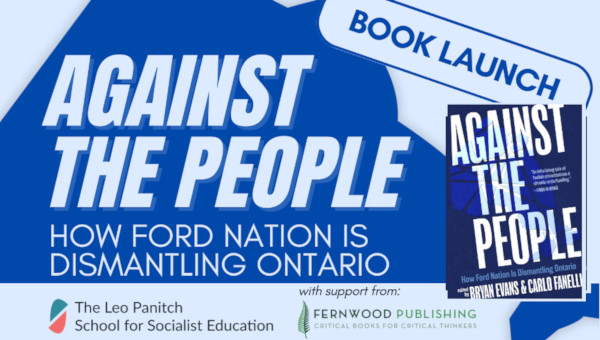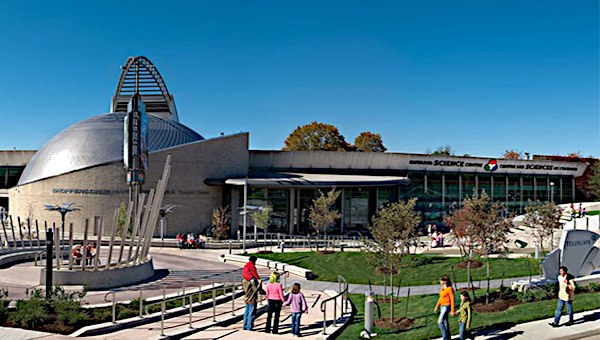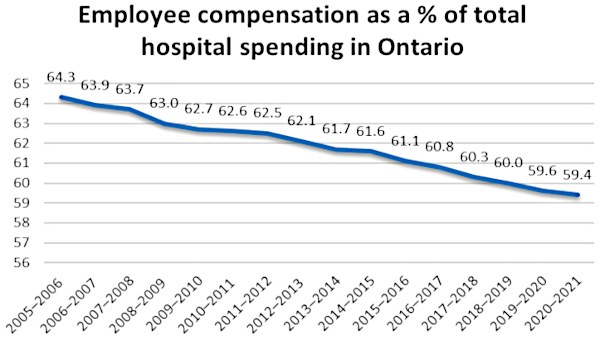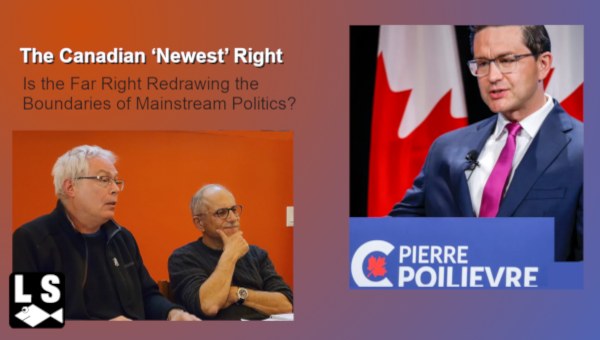Ontario Election 2011: Hard-Right Rejected, But Neoliberalism Still On The Agenda
In a very uninspiring campaign, the Liberal government of Dalton McGuinty has been re-elected to a third term. The Liberals ended up just one seat shy of a majority government – winning 53 of 107 seats in the legislature and 37.6 per cent of the popular vote. The McGuinty Liberals successfully fended off a stiff challenge from the Progressive Conservatives (PC) led by Tim Hudak, who won 37 seats and 35.4 per cent of the vote, and a revitalized New Democratic Party (NDP) led by Andrea Horwath, which ended up with 17 seats and 22.7 per cent of the vote.

The Tide Turns
However, the tide soon began to turn against the Conservatives once the campaign officially began. In addition to running on the orthodox conservative themes of tax cuts and reigning in spending, the Conservatives also appealed to social conservatism and wedge-issue politics, including a call for chain gangs and attacks on “foreign workers” and “affirmative action” (in response to a Liberal plan to give tax credits to companies hiring new immigrants). In the last few days of the campaign, the Tories released ads of past Liberal education plans that played to homophobia. Former PC leaders Ernie Eves and John Tory publicly criticized the Hudak campaign.[2] In addition, the Hudak campaign was tainted by the unpopularity of Mayor Ford, whose proposed service cuts were opposed by over three-quarters of Torontonians.[3] Hudak’s calls for reducing wasteful spending without hurting essential services such as health and education were all too similar to Ford’s campaign against the “gravy train.”
McGuinty rejected wedge-issue politics, campaigned to protect public services and argued that stability in government was critical in these turbulent times. They were enough to move the Liberals up in the polls. He warned against a “Tory trifecta” and reminded voters of the cutbacks of the Harris government. In contrast to the Conservatives, there was a positive role for the state in guiding economic policy. The Liberals ran on a “progressive competitiveness” theme of making Ontario an attractive investment climate due to investments in green energy and having a highly-educated, high-skilled workforce. With Hudak promising to rip up the Green Energy Act, McGuinty warned that Ontario’s reputation as a green energy leader was in danger if the Liberals were not re-elected. McGuinty, who has touted himself as “the Education Premier,” announced that in their next term, grants worth 30 per cent of tuition would be given to university and college students. This was in fact a neoliberal proposal that would lead to the ‘marketization’ of higher education through a voucher system (as the grants go to individual students rather than directly to the institution).[4] However, compared to the NDP’s call for a mere tuition freeze (Ontario already has the country’s highest tuition levels), the Liberal plan appeared more ‘bold’ and ‘progressive.’
In the end, McGuinty presented more of a vision for the province than did Hudak, who stuck to scripted talking points about higher taxes, wasteful spending and broken promises.
The NDP Dallies with the Populist Right
The NDP, under the leadership of Horwath, was hoping to capitalize on the breakthrough in the federal election (where they eclipsed the federal Liberals in the popular vote and won twice as many seats in Ontario) and the memory of the late popular and charismatic leader Jack Layton. Although Horwath represents a working-class, inner-city Hamilton riding, had strong support from trade unions and explicitly rejected Third Way politics in her party leadership campaign,[5] Ontario’s social democratic party ran a centrist, Third Way campaign and distanced itself from the NDP of old. Indeed, this was the most ‘modern’ and least ideological campaign in the history of the ONDP. The party made a populist appeal to anti-tax sentiment in the name of “making life affordable” for “working families” and its campaign against the Harmonized Sales Tax (HST) was identical to that of the Conservatives. The party also called for tax cuts for small business (“Reward the Job Creators”), a policy supported by Liberals, Conservatives and Greens alike. Yet, as Thomas Walkom pointed out, this pitch to small business was an ideologically incoherent position. While it is indeed true that “small businesses do tend to hire more workers per dollar invested…that’s because they are generally non-union shops that pay low wages and avoid extra payroll costs, such as pension obligations.”[6]
The NDP did call for an increase in the corporate tax rate from 11.5 per cent to 14 per cent, a position that was criticized by both the Liberals and Conservatives for being a “job killing tax” that would drive away business investment in the province. But even here the NDP message was incoherent. The NDP platform stressed that Ontario’s corporate tax rate would remain “competitive” with neighbouring U.S. states.[7] Did “rewarding the job creators” apply to large corporations as well as small business? In contrast to the Liberals and Conservatives, Horwath insisted there would be “strings attached” to any tax break for business – they would have to create jobs, invest in new equipment, etc. A campaign ad (“Jobs”) suggested that any company that created any job (regardless of the quality of the job) would get a tax break: “Instead of giving a tax break to the company shipping jobs away, why not give a tax break to the company when they hire?”[8] Had the NDP embraced a version of Reaganomics?
Meanwhile, the campaign put very little emphasis on traditional social democratic themes such as poverty or the expansion of collective bargaining rights, and avoided a serious conversation about taxation and public services. Instead the party went out of its way to disavow itself of the ‘tax and spend’ label, and offered the most fiscally conservative policy of the three parties. Even in the party’s distancing itself from the legacy of the disappointing legacy of NDP Premier (and now federal Liberal leader) Bob Rae, it attacked the Rae government from the right rather than the left. As Shawn Whitney pointed out during the election, the party was now free from the Rae ‘albatross’ (as Horwath was not part of the Rae government). It could now point to the “successful,” “fiscally responsible” NDP governments in Manitoba and Nova Scotia rather than the “high deficits” of Bob Rae. What the NDP is really celebrating, Whitney writes, “is the fact that these governments capitulated utterly to the agenda of big business.”[9]
In spite of this moderate course and attempts to instill confidence in the business community, this did not assuage business hostility to the NDP. With the NDP polling about as well as they did in the federal election (around 26 per cent), there were concerns about the NDP gaining seats and holding the balance of power. A particularly comical example was an editorial in the Globe and Mail, as this stalwart voice of big business, warned that the NDP would wreak havoc on the Ontario economy: “This is not the moderate NDP of the Manitoba or Nova Scotia governments, or even the relative prudence shown in the later years of Bob Rae’s premiership. It is a radical platform that would move Ontario toward a command economy.”[10] One has to wonder if the editorialists even read the text, preferring to rely on tired right-wing journalistic clichés.
In the end, the NDP did end up holding the balance of power in the legislature, although the hoped-for repeat of the ‘orange crush’ that occurred federally ended up being more of an orange fizzle. The NDP made a gain of 7 seats, including two in the Greater Toronto Area, and now holds all three Hamilton seats. But the Liberals retained working-class seats in Windsor and several in the North that are held by the NDP federally and were expected to fall to the NDP. The Working Families Coalition, supported by several unions, campaigned in support of ‘strategic voting’ (for either the Liberals or the NDP depending on the riding). This may have resulted in greater than expected Liberal support in these districts (particularly with CAW President Ken Lewenza making an appearance as stump speaker for the Liberals, spilling over with gratitude for more of the endless subsidies to the auto sector).[11] With the Rae legacy behind it, the NDP has re-established itself as a viable third party in Ontario, although it is still far from replicating the federal experience of squeezing out the Liberal Party.
The real story of the election, however, may well be voter dissatisfaction: voter turnout was a mere 49 per cent, the lowest in Ontario history, with only some 18 per cent of eligible voters actually supporting McGuinty. This is because elections in capitalist democracies are increasingly formal affairs of electing a ‘team of leaders.’ Political parties less and less represent and organize differences in social classes with radically different political agendas. Indeed, with the never-ending shift to the right of social democracy, all three of the major parties in Ontario have come to accept the major tenets of neoliberalism – balanced budgets, a limited state and ‘competitive’ levels of taxation. For all the venom the mainstream press still likes to heap on the NDP Rae government, the acceptance of neoliberalism is what the Rae regime symbolized, as it legislated public sector austerity and turned against its working-class supporters. The difference between the three parties is now a matter of a degree: the NDP may represent the best among them, but it does not offer an anti-neoliberal programme, or an alternate policy exit from the financial crisis. And least of all does it want to engage in a concerted effort of political organizing and mobilizing to form the basis for the class struggles for an egalitarian project against neoliberalism. Voter apathy in Ontario reflects the dismal prospects that electoral politics currently offers working-class people. As a consequence, they are exiting from the political system: as it is now, it is not for them.
Left Agendas and The Election
In an analysis of the NDP platform, Erin Weir argues that the NDP offered a fundamentally different course than the Liberals and Conservatives:
“Another common refrain among commentators is that the Ontario NDP is emphasizing tax cuts… In fact, New Democrats would increase provincial spending more than they would reduce taxes. They would invest more in public services than the Liberals and Conservatives.”[12]
It is certainly true that compared to the Liberals and Conservatives, the NDP platform was more committed to public services and less to tax cuts. In the Conservative platform, the cost of tax cuts exceeded that of new spending by a staggering ratio of thirteen to one; the Liberal platform, too, prioritized tax cuts over new spending by a ratio of two to one. Holding back on corporate tax cuts would generate close to $2-billion in annual revenue. But tax cuts were a significant proportion of the NDP platform as well – including a reduction in the small business tax rate from 4.5 per cent to 4 per cent, the removal of the HST from electricity and home heating and the cutting in half of the HST on gasoline over four years ($1.05-billion), and targeted tax credits to companies that created new full-time jobs ($450-million). In total, these tax cuts would cost $1.6-billion, just under half the cost of the NDP platform.[13]
Nick Falvo observes that “the commitments in the platform that carry the biggest price tags are the ones that would seem to have the most populist appeal.” For instance, “removing the HST from home heating…would cost 10 times as much as the platform’s commitment to homecare.” The NDP did put forward decent planks such as an increased funding for public transit to municipalities under the condition that they freeze transit fares, as well as the creation of 50,000 affordable housing units and an emergency dental care program (although these two items do not appear in the platform, nor does the tuition freeze). There is a call for an increase in the minimum wage to $11 per hour indexed to inflation, and increased investments in healthcare (with spending commitments twice as great as that of the Liberals).[14]
On the whole, however, this was a very modest platform that accepts the basic precepts of neoliberalism, and offers little in terms of expanding public programs and addressing the pressing issue of growing inequality. As Hugh Mackenzie observes, between 1992 and 2007, about 90 per cent of the income gains went to the wealthiest 1 per cent of income earners, while at the same time the effective tax rate for the wealthy has gone down. Yet talk of raising taxes has become the ‘third rail’ of Canadian politics.[15] The NDP was unwilling to call for raising taxes on individuals, not even on the wealthiest income earners; indeed, it has called for tax cuts. Meanwhile, the party’s poverty strategy was pathetically inadequate. Social assistance benefits, slashed by the Harris government in 1995, are now 35 per cent less in real terms; modest increases under McGuinty did not even keep up with inflation. Yet, the NDP merely called for social assistance benefits to be kept at current levels and indexed to inflation![16] Ultimately, the NDP did not present an inspiring vision for a more equitable Ontario. A social democratic party ought to include the massive expansion of public programs and redistributive measures – free public transit, free college and university tuition, a guaranteed annual income, universal pharmacare, dentalcare and eyecare, etc. Of course, such a program would require much higher levels of taxation. Mackenzie’s call two years ago for an adult conversation within social democratic circles about taxation – that is, a recognition that taxes cannot be divorced from the public services they fund – has gone unanswered.[17] Such a discussion has become anathema to an NDP that has moved further away from traditional social democracy and has opportunistically embraced anti-tax politics.
Conclusion
Two main conclusions can be drawn from this election. First, it represents a repudiation of the hard-right: this was Hudak’s election to lose, and he lost. Certainly, the severe impact of service cuts at the municipal level in Toronto – meaning closing libraries, cutting back daycare spaces and transit service, etc., not just trimming ‘gravy’ – played a role in discrediting the Conservatives. The hard right view that ‘efficiencies’ would allow tax cuts while maintaining service levels was shown, as it has been over two decades, to be ideological nonsense.
Second, the election represents a deep dissatisfaction with liberal democratic politics as usual of neoliberalism. There was no compelling anti-neoliberal alternative on the agenda, and this is despite Ontario being immersed in the greatest economic crisis since the 1930s. The NDP failed to offer any such an alternative. Even the long-time party stalwart Gerald Caplan pondered in his post-election column whether the NDP under Horwath could still be said to be a voice of social democracy:
“As was repeatedly noted for the past month, her platform was a strange mixture of components adding up to something without real coherence. The low-balling of environmental issues was a real problem for many NDP supporters. Ms. Horwath might well be quietly relieved that the demands she apparently would have made of Mr. McGuinty as the price of keeping him in power can now quietly be shelved.
“There’s a reason New Democrats call themselves social democrats – or at least I hope they still call themselves that. The language matters. It says that democracy must reign in the social field as well as the political one. It says that our goal is a more equitable and just society for all. It says that the common good is paramount and that in a world dominated by vast corporations, government is necessary to help ordinary people live in dignity and security. I’m not at all sure that the platform that Ms. Horwath pushed in this campaign reflected those values. And if that’s not what the NDP now stands for, then what’s its purpose?”[18]
“Remarkably, the activism that developed in opposition to the Ford agenda in Toronto did not make a significant intervention in the provincial election … This speaks to the serious organizational decline of organized Left forces in unions and movements that is part and parcel of the cynicism and apathy toward liberal democratic politics.”
But with the exception of an intense debate over environmental issues and green energy, where the NDP was heavily criticized by ecologists for its populist embrace of energy tax cuts that benefits the worst emitters,[19] and a strong grassroots campaign by the Ontario Health Coalition against the continued inroads of privatization and deterioration of healthcare services, the Left seemed largely invisible. Remarkably, the activism that developed in opposition to the Ford agenda in Toronto did not make a significant intervention in the provincial election, exactly the place where the Toronto and municipal budgetary issues in Ontario need to be resolved! This speaks to the serious organizational decline of organized Left forces in unions and movements that is part and parcel of the cynicism and apathy toward liberal democratic politics. Nothing else is on offer either.
With a “major minority,” the McGuinty government appears stable for the next few years, as both of the opposition parties will be reluctant to pull the plug. The Liberals in power have not been outright reactionary, but in spite of a few improvements (i.e., full-day kindergarten, an increased minimum wage), they have not undone most of the damage caused by the Common Sense Revolution. With the NDP holding the balance of power, it is possible to extract some progressive legislation, such as improved funding for public transit and perhaps labour law reform.
Other issues where the Left could exert pressure include the raising of social assistance levels above the poverty line, the pushing back against further healthcare privatization and addressing the problems of long-term and elder care, bringing per capita post-secondary funding back to the Canadian average (Ontario is now the lowest in per capita funding in the country), and the reform of energy policy. The two new NDP MPPs elected in the GTA – Jonah Schein (Davenport) and Jagmeet Singh (Bramalea-Gore-Malton, the first NDP MPP elected in Peel Region) – are young, energetic and have credibility as community activists, and will likely make strong MPPs. However, given what the NDP has actually prioritized under Horwath’s leadership, the NDP appears unlikely to articulate much of an alternative vision.
The Liberals and to a lesser extent, the Tories, tweaked their platforms to appear more optimistic. The NDP, while more cautious, still accepted the Liberal projections from March, although few serious economic analysts would view these projections as realistic given the state of the global economy.[20] Given deteriorating economic conditions, we are likely to see an austerity agenda. A highly compromised NDP holding the balance of power at Queen’s Park will not be enough. An anti-neoliberal movement in Ontario is needed now more than ever. •
Endnotes:
1.
Robert Benzie, “Hudak Tories Roaring Toward a Majority: Poll,” Toronto Star, June 26, 2011.
2.
Lee Greenberg, “Eves Attacks Ontario Tory ‘Tea Party’ Elements,” Ottawa Citizen, September 1, 2011; “John Tory Slams Tea Party Tim’s Pandering,” Canada NewsWire, September 6, 2011.
3.
Robyn Doolittle, “Massive Poll Shows Toronto is United Against Ford’s Proposed Cuts,” Toronto Star, September 16, 2011.
4.
For a critique, see “Liberal Platform Factsheet.”
5.
See Matt Fodor and Bryan Evans, “ONDP Leadership: A Revival of Class Politics?,” The Bullet No. 197, March 22, 2009.
6.
Thomas Walkom, “Jack Layton’s NDP is Raring to Go. But Where?,” Toronto Star, September 16, 2011.
7.
“Plan for Affordable Change,” p. 23-24.
9.
Shawn Whitney, “Killing the Bob Rae Myth,” X-Ray Magazine Issue 31, September 15, 2011.
10.
“Behind Andrea Horwath’s Charisma is a Dangerous Plan,” The Globe and Mail, October 3, 2011.
11.
Rob Ferguson, “CAW Gives McGuinty Liberals Another Boost,” Toronto Star, October 5, 2011.
12.
Erin Weir, “Ontario NDP Platform: The Full Monty,” Progressive Economics Forum, September 25, 2011.
13.
“Putting People First: The Ontario New Democrat Fiscal Framework Document 2011.”
14.
Nick Falvo, “The Ontario NDP Platform,” Progressive Economics Forum, September 20, 2011.
15.
Hugh Mackenzie, “Rich Getting Richer in Ontario,” The Real News, September 28, 2011.
16.
Falvo, “Ontario NDP Platform.”
17.
Hugh Mackenzie, “Can We Have An Adult Conversation About Taxes?,” Toronto Star, October 26, 2009.
18.
Gerald Caplan, “Hudak Conservatives Lose as Progressives Take Ontario,” The Globe and Mail, October 7, 2011.
19.
For a critique of the NDP’s energy tax cut on both ecological and equity grounds, see Wayne Roberts, “Why Energy Tax Breaks Harm Food and Environment.” Roberts writes: “In the NDP plan, Ontario residents will be a billion dollars less in energy taxes in 2015. Since the tax cut is not targeted to help people having a hard times making ends meet, it will almost inevitably favor the rich. The rich have more spacious homes to heat, more appliances to plug in, and drive bigger cars with larger gas tanks. They will save most from a tax cut on energy.
In contrast to the NDP platform offering the lion’s share of billion dollar tax cuts off energy to the affluent, the NDP’s proposed transit subsidy – a government intervention designed to promote the environment while assist people on modest incomes who use public transit – only comes to a third that amount…”
20.
Mackenzie, “Rich Getting Richer in Ontario.”





